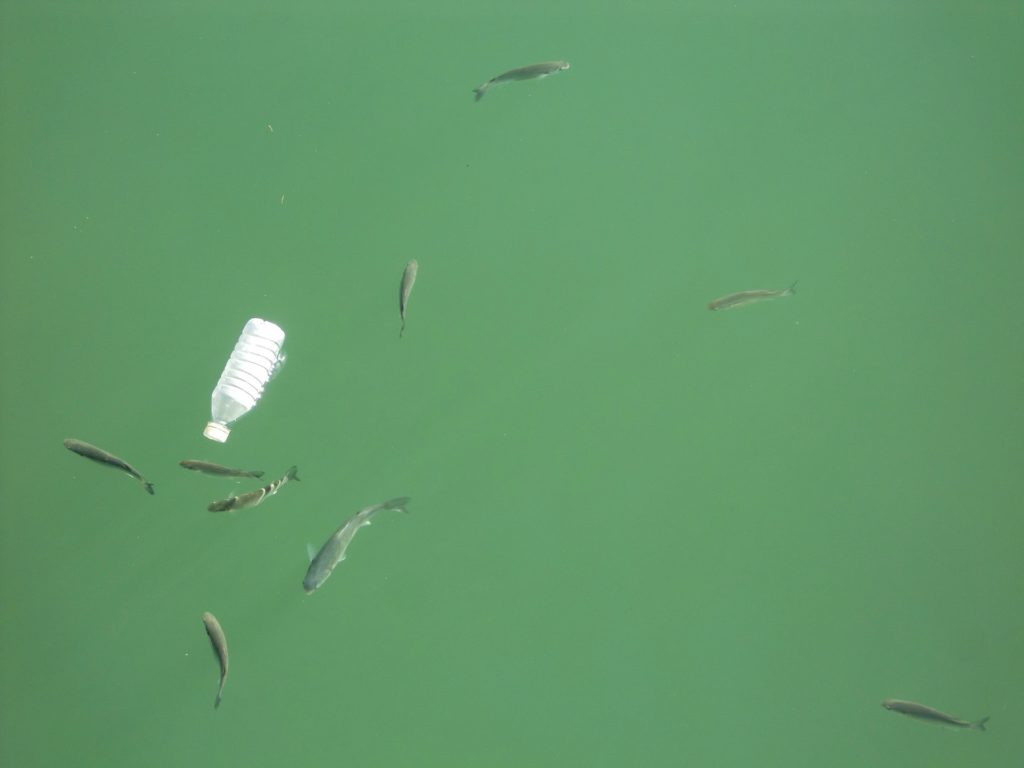On October 17, several media warned about the death of a large number of fish in the Madre de Dios lagoon, which is located at the mouth of the Pacuare River, northeast of the district of Bataán, in the Limón province of Costa Rica. The photos and videos taken by the fishermen themselves do not show small fish, but adult fish, which come to reproduce in this estuary, both from the sea and from the three bodies of fresh water that feed it: the Pacuare River, the Madre de Dios River and the Bataán Channel.
A brief internet investigation shows at least eight incidents associated with fish appearing dead at the site, reported since 2003. It is on that date that the Regional Institute for Studies on Toxic Substances of the National University (Iret-UNA) began to monitor and work hand in hand with the communities , reporting and denouncing, over and over again, the death of aquatic fauna and the impacts on the health of the inhabitants of the area. What have the Ministry of Health, the Ministry of Environment and Energy and the Ministry of Agriculture and Livestock, done for more than 20 years? Nothing.
Biodiversity loss and health impacts
Henry Knight has more than 25 years of fishing in the lagoon. In verbal and audiovisual records from Iret-UNA, from 2019, Henry describes the environmental impact: “When we arrived here, we did not take out the small boats because we were afraid that the bass would jump and sink them. There were everywhere. Today, if I see a bass jumping into the lagoon, I call my wife, because it is something magical, it is a miracle.” Then he concludes: “The banana plantation arrived and the contamination arrived. You were traveling along the river and a plane passed spraying the banana and that thing reached you, touched you, like when it starts to rain a little…”
Needless to say, it is forbidden to spray people and rivers with agrochemicals. Iret-UNA’s studies indicate that the biodiversity that existed in 2014 was halved in 2016 and that, since then, it has not recovered. That is why Henry Knight sees fewer and fewer sea bass, grunts, and mojarras. But there are other effects that are stealthy, quieter, the product of continuous and long-term exposure to these toxic substances.
At least 100 families live near the lagoon. A 2018 study by Iret-UNA showed that women who lived closer to banana plantations, and therefore closer to irrigations of a fungicide called Mancozeb, had more manganese in their hair. Their children had poor socio-emotional development. The study indicates that inside the classrooms of educational centers near banana plantations there were pesticides such as HerbiLifo and other toxic substances.
In other words, the exposure associated with these irrigations has produced effects on the health of the neighbors. These inhabitants are exposed to these substances in multiple ways, since the agrochemicals that are applied in pineapple and banana plantations are mobilized into the rivers. There they accumulate in the algae that serve as food for the fish that, in turn, feed the inhabitants.
Lack of political will
In the case of the Madre de Dios lagoon, thanks to the support of Iret-UNA, the communities have been directly involved in denouncing and understanding what is happening in their environment. Although this is one of the few cases that are reported, there are probably many more, unknown, associated with the more than one hundred thousand hectares dedicated to the cultivation of bananas and pineapples in Costa Rica.
Little is said about the more than 58 deaths from pesticide poisoning, which occurred between 2010 and 2020, and about the lack of epidemiological studies that evaluate the chronic effects of exposure to these substances. This is according to a diagnosis carried out in 2022 by the United Nations Development Program (UNDP).
Recently, within the context of Costa Rica’s participation in the COP 16 on biodiversity in Cali, it has been pointed out that there has been zero progress in relation to target 38 of its National Biodiversity Strategy 2016-2025 (ENB2), in which it had been established that, by 2020, there would be “a trend towards a reduction in the net consumption of agrochemicals in the country, from the implementation of sustainable practices”. In addition, according to the UNDP, the country uses 20 of the 22 most dangerous pesticides in the world.
The serious situation that exists in the Madre de Dios lagoon is the result of years of negligence and inaction in relation to the management of agrochemicals in the country. After more than 20 years of constant complaints, the residents of Bataán have seen their health impacted by the aerial applications of agrochemicals and other possible sources of exposure to these substances.
Action is needed. Finding the companies responsible for incidents with agrochemicals in river environments is complex, because there are many that could be the source of the problem. So it is necessary to focus on prevention. The biodiversity strategy includes all the necessary actions. It is essential that the Ministry of Agriculture and Livestock provides quality technical assistance to farmers, so that they develop more sustainable agricultural practices. Then, together with the Ministry of Health, it must prohibit other agrochemicals classified as very toxic, as it has already done with chlorothalonil, and control that companies follow the provisions of the regulations on the use of pesticides. Only in this way will we have healthy populations and a country that deserves to celebrate its biodiversity.

